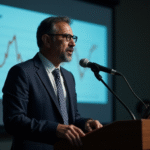Introduction
The Mexican education system faces a significant challenge in providing an optimal number of teachers for its students, particularly in basic education (primary and secondary levels).
Teacher Shortage Statistics
According to the Organisation for Economic Co-operation and Development (OECD), approximately 30% of students in Mexico experience some level of teacher shortage.
Breakdown of Students Affected
- 8.7% of students face the highest level of teacher shortage.
- 22.1% experience significant or moderate teacher shortages.
These statistics translate to a teacher-to-student ratio below the OECD’s recommended level, predominantly affecting vulnerable communities based on social or economic factors.
Impact of Teacher Shortages
Insufficient teaching staff directly reduces the learning opportunities for students, hindering their educational progress and overall development.
Contextualizing the Issue
Mexico’s educational crisis is not new, with teacher shortages being a persistent problem for decades. The country’s vast geographical expanse, encompassing both urban and rural areas, contributes to the challenge of ensuring adequate teacher distribution.
Rural and marginalized communities often struggle to attract and retain qualified teachers due to limited resources, lower salaries compared to urban areas, and challenging working conditions. This results in a disproportionate teacher shortage affecting students in these regions.
Moreover, the Mexican teaching profession faces issues such as inadequate teacher training programs and insufficient support for continuous professional development. These factors further exacerbate the teacher shortage problem.
Who is Affected?
The 30% of students experiencing teacher shortages primarily consist of those enrolled in basic education. This group includes children from low-income families, indigenous communities, and rural areas. These students are often the most vulnerable and in need of quality education to break the cycle of poverty and social exclusion.
Relevance of the Issue
Addressing teacher shortages is crucial for ensuring equitable access to quality education in Mexico. A well-distributed and adequately trained teaching force is essential for fostering an inclusive, high-performing education system that empowers all students to reach their full potential.
Key Questions and Answers
- Q: What is the main challenge facing Mexico’s education system? A: The primary challenge is ensuring an optimal number of teachers for the total student population, particularly in basic education.
- Q: How widespread is the teacher shortage problem in Mexico? A: According to the OECD, approximately 30% of students in Mexico face some level of teacher shortage.
- Q: Which student groups are most affected by teacher shortages? A: Students in basic education, particularly those from low-income families, indigenous communities, and rural areas, are disproportionately affected.
- Q: What are the consequences of insufficient teaching staff? A: Insufficient teaching staff directly reduces learning opportunities and hinders students’ educational progress.
- Q: What factors contribute to the teacher shortage problem in Mexico? A: Factors include limited resources, lower salaries in rural and marginalized areas, challenging working conditions, inadequate teacher training programs, and insufficient support for continuous professional development.






